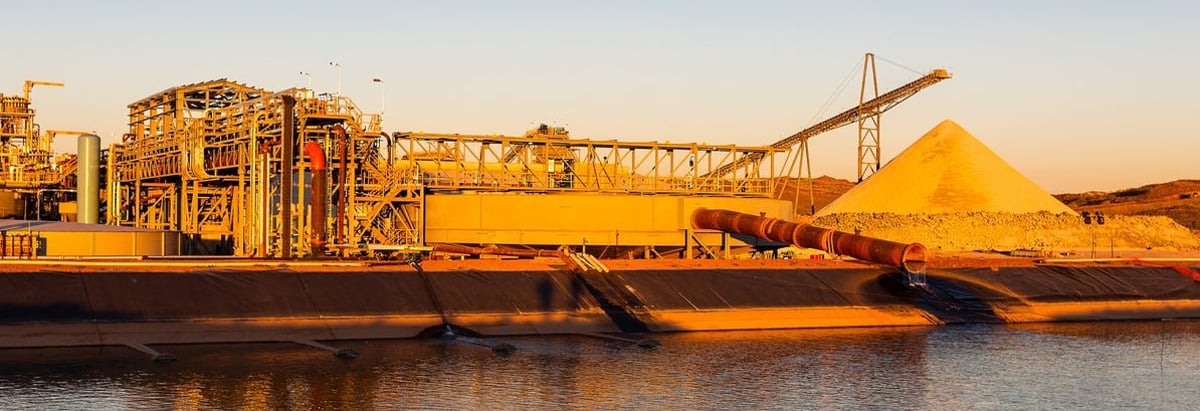Stock Analysis

Warren Buffett famously said, 'Volatility is far from synonymous with risk.' So it might be obvious that you need to consider debt, when you think about how risky any given stock is, because too much debt can sink a company. We can see that Pilbara Minerals Limited (ASX:PLS) does use debt in its business. But the real question is whether this debt is making the company risky.
When Is Debt Dangerous?
Generally speaking, debt only becomes a real problem when a company can't easily pay it off, either by raising capital or with its own cash flow. Part and parcel of capitalism is the process of 'creative destruction' where failed businesses are mercilessly liquidated by their bankers. While that is not too common, we often do see indebted companies permanently diluting shareholders because lenders force them to raise capital at a distressed price. By replacing dilution, though, debt can be an extremely good tool for businesses that need capital to invest in growth at high rates of return. When we examine debt levels, we first consider both cash and debt levels, together.
View our latest analysis for Pilbara Minerals
What Is Pilbara Minerals's Debt?
As you can see below, at the end of June 2024, Pilbara Minerals had AU$446.9m of debt, up from AU$332.9m a year ago. Click the image for more detail. However, it does have AU$1.63b in cash offsetting this, leading to net cash of AU$1.18b.
A Look At Pilbara Minerals' Liabilities
We can see from the most recent balance sheet that Pilbara Minerals had liabilities of AU$430.5m falling due within a year, and liabilities of AU$634.6m due beyond that. On the other hand, it had cash of AU$1.63b and AU$175.4m worth of receivables due within a year. So it actually has AU$736.8m more liquid assets than total liabilities.
This surplus suggests that Pilbara Minerals has a conservative balance sheet, and could probably eliminate its debt without much difficulty. Simply put, the fact that Pilbara Minerals has more cash than debt is arguably a good indication that it can manage its debt safely.
It is just as well that Pilbara Minerals's load is not too heavy, because its EBIT was down 88% over the last year. When a company sees its earnings tank, it can sometimes find its relationships with its lenders turn sour. When analysing debt levels, the balance sheet is the obvious place to start. But ultimately the future profitability of the business will decide if Pilbara Minerals can strengthen its balance sheet over time. So if you want to see what the professionals think, you might find this free report on analyst profit forecasts to be interesting.
But our final consideration is also important, because a company cannot pay debt with paper profits; it needs cold hard cash. Pilbara Minerals may have net cash on the balance sheet, but it is still interesting to look at how well the business converts its earnings before interest and tax (EBIT) to free cash flow, because that will influence both its need for, and its capacity to manage debt. During the last three years, Pilbara Minerals produced sturdy free cash flow equating to 53% of its EBIT, about what we'd expect. This cold hard cash means it can reduce its debt when it wants to.
Summing Up
While we empathize with investors who find debt concerning, you should keep in mind that Pilbara Minerals has net cash of AU$1.18b, as well as more liquid assets than liabilities. So we don't have any problem with Pilbara Minerals's use of debt. When analysing debt levels, the balance sheet is the obvious place to start. But ultimately, every company can contain risks that exist outside of the balance sheet. Be aware that Pilbara Minerals is showing 2 warning signs in our investment analysis , and 1 of those makes us a bit uncomfortable...
At the end of the day, it's often better to focus on companies that are free from net debt. You can access our special list of such companies (all with a track record of profit growth). It's free.
New: Manage All Your Stock Portfolios in One Place
We've created the ultimate portfolio companion for stock investors, and it's free.
• Connect an unlimited number of Portfolios and see your total in one currency
• Be alerted to new Warning Signs or Risks via email or mobile
• Track the Fair Value of your stocks
Have feedback on this article? Concerned about the content? Get in touch with us directly. Alternatively, email editorial-team (at) simplywallst.com.
This article by Simply Wall St is general in nature. We provide commentary based on historical data and analyst forecasts only using an unbiased methodology and our articles are not intended to be financial advice. It does not constitute a recommendation to buy or sell any stock, and does not take account of your objectives, or your financial situation. We aim to bring you long-term focused analysis driven by fundamental data. Note that our analysis may not factor in the latest price-sensitive company announcements or qualitative material. Simply Wall St has no position in any stocks mentioned.
About ASX:PLS
Pilbara Minerals
Engages in the exploration, development, and operation of mineral resources in Australia.

